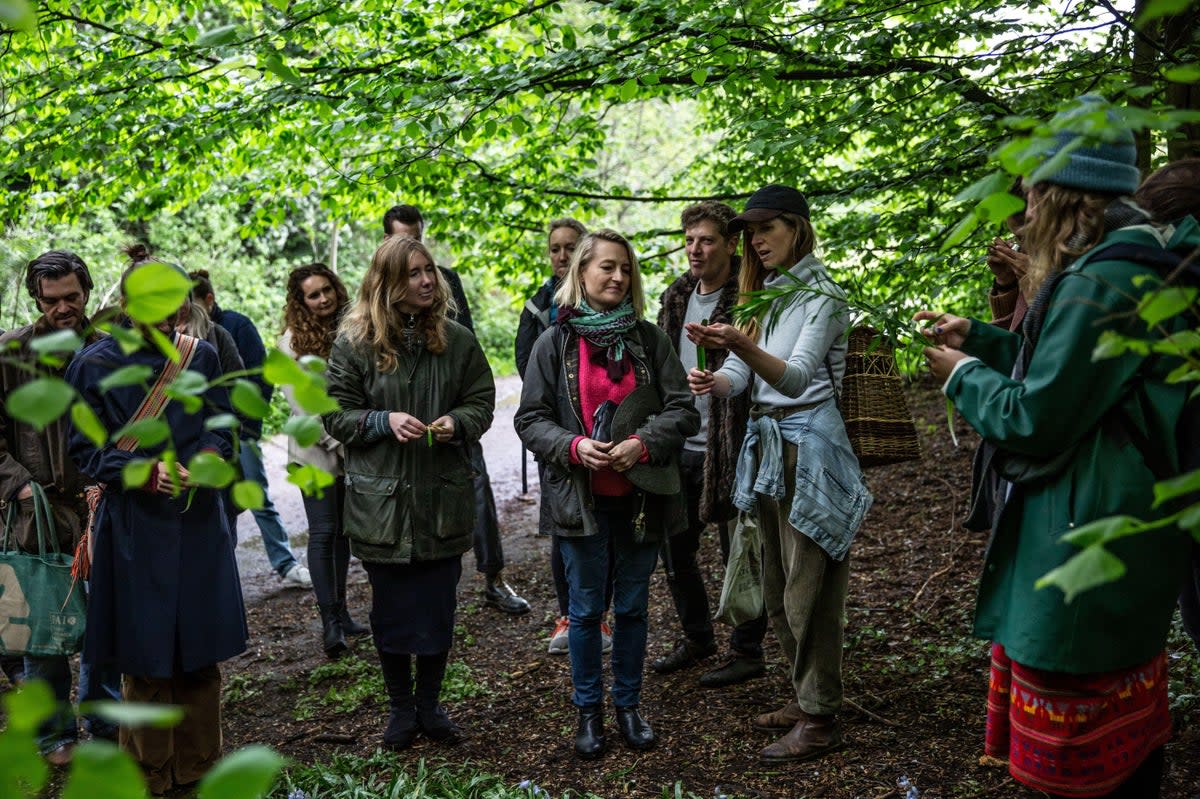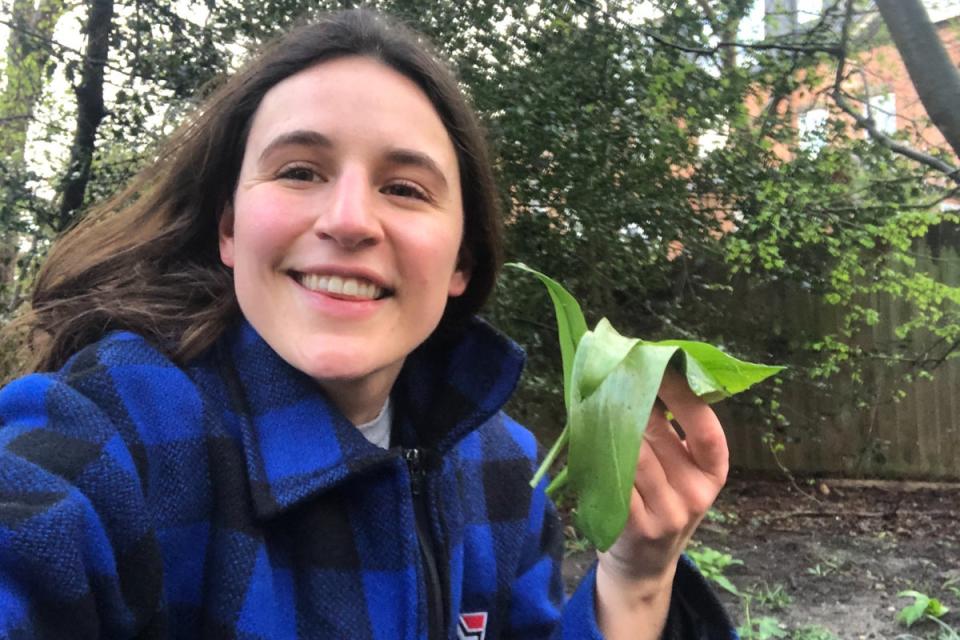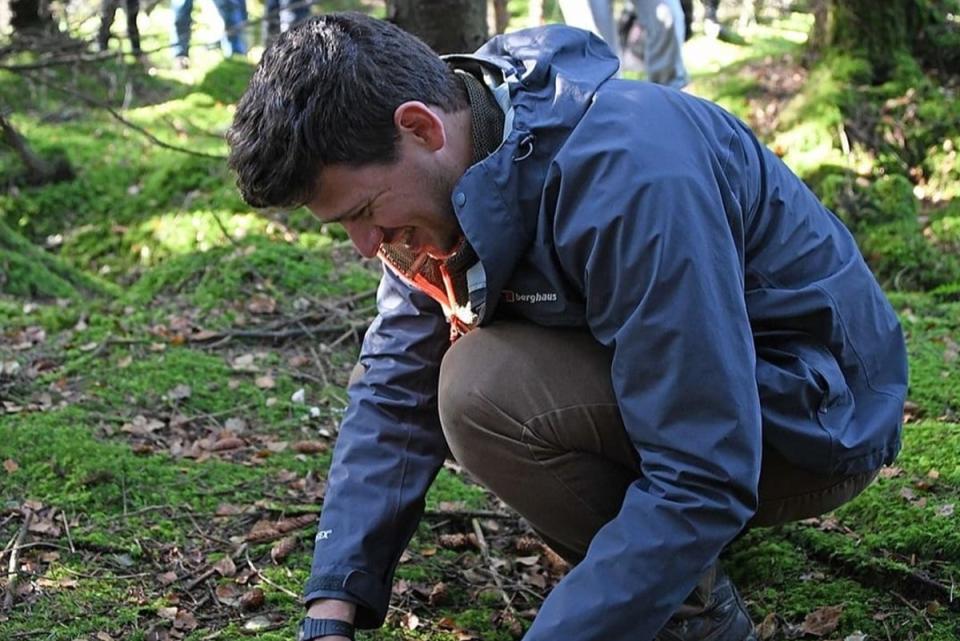Going green: the unstoppable rise of urban foraging

It’s a Sunday afternoon. I’m down on my haunches in the middle of my local park in Archway, diligently picking wild garlic leaves and putting them in a plastic bag. Dog walkers stare at me as I go past; many of them look absolutely disgusted.
Not that I blame them. Who knows what’s on those leaves? Surprising as it might sound, though, I’m not the only one to spend my weekends doing this.
Despite being rather a niche hobby, more and more Londoners are turning to foraging as a way to reconnect with nature and supplement their diets — or, in the case of my wild garlic, to whizz into a delicious pesto.
“There’s a misconception — people think you can only forage out in the countryside. There’s kind of this nostalgic idea of foraging in the middle of a woodland,” says James Wood, His company, Totally Wild, runs foraging tours around the UK, and, he says, it’s popular, with many of his London tours fully booked for months in advance. “Stuff you’ll find in a city centre… you just cannot access in the countryside. It sounds really weird, but you’ll get much more variety in a city.”
“London — and many other cities — are extraordinarily good bases for foraging,” John Rensten, of Forage London, agrees. “They’re very diverse. They normally have microclimates which extend the growing seasons of things. They have an awful lot of overlapping: one plant coming in while another one’s going out. So, really, in London, you’ve got an endless foraging season.”

In addition to the microclimate, the city’s wetlands, parks and vast heaths provide a breeding ground for all sorts of unusual flora, including avocado trees.
In the past 20 years, the UK foraging scene has exploded in a big way. Now there are books and guides galore, a verified Association of Foragers (with their own certification) and Facebook groups, where people can swap images of their latest finds. “There’s now a lot more foraging teachers than there used to be,” Rensten says.
A veteran of the foraging scene, Rensten was one of the first to help bring it to a UK audience. “[It was] myself and my friend Mark in Scotland and maybe a dozen or so other people dotted around the country, getting lots of people enthusiastic about foraging. They [in turn] got lots of people enthusiastic about foraging... [now] you can probably go on a foraging walk with 100 different people all over the country, maybe more.”
After the pandemic, this interest only grew. Not only are many foraging groups working through a backlog of cancelled tours, but many people who turned to nature during the lockdowns — either growing their own produce or going for regular walks in the capital’s parks — have also started getting involved in the scene. And though the idea of foraging through London’s parkland might conjure images of retirees in overalls, this is not a hobby for the retired — or at least, not only, Wood’s London-based tours often comprise a rather young demographic, often between the ages of 20 to 35, “young professionals, [who are] much more interested in sustainability, eating healthily, and linking with the outdoors in a positive way.”
It also skews female. “I worked as a photographer for 15 years. You would have thought if I wanted to meet women, that would have been the place to do so,” Rensten laughs. “I’m happily married and I have been for a long time. But my wife used to look at photographs of some of the [foraging] groups... sometimes it was all women in their mid-20s to mid-30s.
“When I started in London about 15 years ago, I thought it was going to be me and a load of botany nerds correcting me on using the wrong name. And it’s never, ever been that at all. It’s always just been people who thought it might be an interesting topic.”

Now that spring is on the horizon, the foraging season can begin in earnest. Wood lists wild garlic, dandelion leaves and pineapple weed as the plants of the moment, with elderflowers not far off. As the year rolls on, things like chestnuts, rocket, nettles and blackberries can be found around London’s parks. The only thing off limits — at least for Rensten — are mushrooms, because “soil toxicity is quite hard to work out”.
It all sounds delicious — a forest of food on our concrete doorsteps. Despite that, Amy Hitchcock says there’s still deep scepticism about foraging, especially in cities. A seasoned forager herself, Hitchcock has been hosting walks (via her site Forth and Forage) and picking plants in the capital for years, but says that there is still little understanding of the benefits.
She cites one example of offering alexanders seeds (seeds from the invasive, fast-growing alexanders plant) to bakeries for free to use in their bread. They’re edible — as she puts it, “peppery and nice” — but she often gets turned down. Until we’re seeing locally foraged food in local restaurants, she says, “not just in a really posh, fancy farmers’ market, then that’s when we’ll know it’s really taken off, but I don’t think we’re at that level yet.
“The stuff you do find in farmers’ markets, it’s like the opposite of foraging, because it’s so expensive.”
There’s also the danger of over-picking. Wild garlic has had something of a boom in recent years, with tubs of pesto lining the shelves of Borough Market’s vendors. As a result, Hitchcock doesn’t show her walking groups where any hotspots are, but brings along leaves of her own to show them instead.

Nevertheless, once green shoots start poking out of the ground, certain types of people (including myself) can’t help hunting around for plastic containers and staring misty-eyed at their empty jam jars. On my recent trip, I gathered enough wild garlic to add to my risotto that night and bake with my chicken the night after that; not bad for two hours of foraging (they do also freeze well), but there was more out there, including waxy magnolia flowers and nettles (which will undoubtedly form the basis of my next trip).
Why do people love it so much? Wood doesn’t hesitate.
“It’s really rewarding… you learn it, you go out, you pick it and you eat it. It’s speculative, but I think, foraging, as a civilization, we’ve done for millennia. And this very modern way of life we’ve done for 50 or 60 years.”

First time foraging? Here are some tips for starting out
First time with a guide: a great way of starting out on your foraging journey is by doing a tour first. Forage London and Totally Wild are good places to start, with knowledgeable guides who are more than happy to identify edible planets and answer questions, as well as identify foraging hotspots. A must!
Make sure you can legally forage: not everywhere is open season. Check before you set out, but as a rule, foraging in public parks is allowed for personal use, but foraging in the Royal Parks is forbidden. Sites of Special Scientific Interest (SSSIs) are a strict no, while the National and Woodland Trusts are generally okay with it, as long as it’s not a rare species.
Don’t pick anything you’re not sure of: when you’re dealing with wild plants, it’s important to be sure of what you’re putting in your mouth. Is there anything you’re not 100 per cent certain is safe, or that can’t be easily identified? Don’t take that risk — and in case it’s needed, Totally Wild has a good identification page.
Pick responsibly: the first rule of foraging is to be sustainable. So you’ve found a patch of wild garlic; don’t get your scissors out and shred every last leaf in sight. Take only what you need, and check if a plant is common or rare before going to town with your Tupperware.


